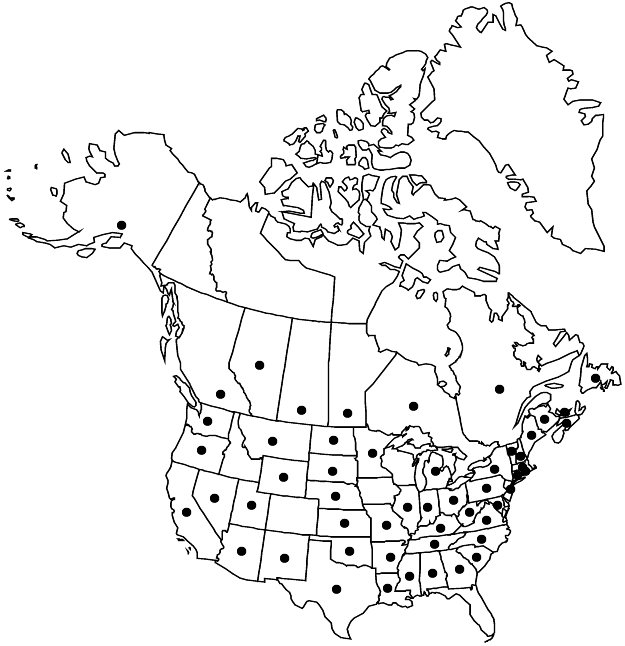Polygonum aviculare subsp. neglectum
Comp. Fl. Ital., 583. 1882.
Plants green, homophyllous or sometimes heterophyllous. Stems usually 1–7, procumbent to ascending, sometimes erect, mostly branched from base, (5–)15–60 cm. Leaves: ocrea (3–)4–8 mm, proximal part cylindric, distal part with inconspicuous veins, eventually disintegrating and leaving few or no fibrous remains; petiole (0.3–)1–3(–5.2) mm; blade green, lateral veins visible but not raised abaxially, narrowly elliptic or oblanceolate, (7.6–)12.2–34(–40) × 1.5–6.8(–8) mm, (3.4–)4.2–9.2 times as long as wide, apex acute or obtuse; stem leaves 1–2.7(–3.3) times as long as branch leaves. Cymes uniformly distributed along stems and branches, 1–3(–5)-flowered. Pedicels mostly enclosed in ocreae, 1.5–3 mm. Flowers: perianth (1.9–)2.3–3.4 mm, 1.6–2.6 times as long as wide; tube 28–48% of perianth length; tepals overlapping, spreading slightly as achene matures, green usually with pink or red, rarely white, margins, oblong, ± cucullate, outer tepals not pouched at base; veins branched, moderately to strongly thickened; stamens 7–8. Achenes exserted from perianth, dark brown, ovate, 3-gonous, 1.2–1.8 mm, faces unequal or, less often, subequal, flat to concave, apex with straight edges or somewhat bent toward narrow face, striate-tubercled or, rarely, obscurely so; late-season achenes uncommon, 2–3.7 mm. 2n = 40, 60.
Phenology: Flowering Jun–Nov.
Habitat: Disturbed places
Elevation: 0-1500 m
Distribution

Alta., B.C., Man., N.B., Nfld. and Labr. (Nfld.), N.S., Ont., P.E.I., Que., Sask., Ala., Alaska, Ariz., Ark., Calif., Conn., Ga., Ill., Ind., Kans., Ky., La., Maine, Md., Mass., Mich., Minn., Miss., Mo., Mont., Nebr., Nev., N.H., N.J., N.Mex., N.Y., N.C., N.Dak., Ohio, Okla., Oreg., Pa., R.I., S.C., S.Dak., Tenn., Tex., Utah, Vt., Va., Wash., W.Va., Wyo., Europe.
Discussion
Subspecies neglectum has been reported from Colorado, Idaho, Iowa, and Wisconsin; those reports have not been confirmed.
Selected References
None.